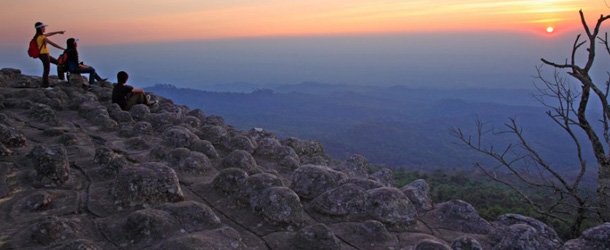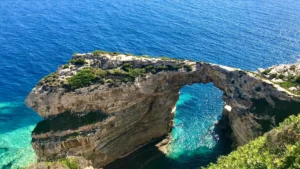Has Southeast Asia “jumped the shark”? Judging by the crowds jostling for a sunrise view over Angkor Wat during peak season, you might think so. But don’t write off the rest of the region just yet!
Go a little further off the beaten track, and you’ll find beaches that look just as splendid as Phuket’s, temples as majestic as Angkor’s – all the virtues of the aforementioned, without the crowds. As Southeast Asia’s top destinations grow in popularity, the need for alternatives to its “greatest hits” grow more urgent than ever.
“We need to take travelers where they can get real good experiences… but it’s really hard to get these kind of experiences where all the highlights are, because you’re together with a million other tourists!” explains Willem Niemeijer, founder and chairman of Khiri Travel. “Seeing sites that are a little bit less well known, that have no tourists, is often what remain with us for a much longer time.”
In that respect, consider the following alternatives.
Instead of Bali, try Lombok. Bali is very much on the world’s travel radar, but the crowd-averse may find Kuta and Ubud a bit of a turn-off. Luckily, the island of Lombok is just a short boat ride to the east – and provides an excellent Bali alternative.
Lombok is blessed with most of Bali’s natural gifts – pristine white beaches, undisturbed forests, and a scenic volcano looming over the whole island. The island’s natives are a bit more conservative than Bali’s, contributing to Lombok’s more quiet, reserved air.
The main tourist drag of Senggigi on Lombok’s west coast offers a good variety of budget- to luxury-level accommodations fronting a quieter beach than you’d ever find in Bali’s southern reaches. Lombok even has its own Kuta Beach – but one with far less energy and far more natural beauty than its more famous namesake!
Finally, GunungRinjani – Indonesia’s second tallest mountain – provides a series of trekking trails that rewards energetic tourists with the sight of Lake SegaraAnak in Rinjani’s caldera.
Instead of Angkor Wat, try BanteayChhmar. This writer was impressed by Angkor Wat’s looming spires, yet somewhat irked by the masses of tourists elbowing each other for the perfect shot of the sun rising over the ancient temples. Luckily the relatively recently cleared temples of BanteayChhmar were only a couple of hours’ drive away – a temple complex with just as much history with much less jostling.
Built in the 12th century as a tribute to King Jayavarman VII’s son, who predeceased him in battle with the rival Champa kingdom, BanteayChhmar stands in the middle of a square-shaped moat, around which four Cambodian villages stand today.
Visitors to BanteayChhmar should either book a homestay in one of the villages, or splurge for a “glamping” experience right on the temple grounds – Siem Reap is too far away to make a day trip of this place. Your overnight stay gives you intimate access to a sprawling, if somewhat disassembled, temple ground, along with close proximity to a quaint Cambodian open-air market; the Pol Pot baray (lake), and the Soieries du Mekong silk factory. The exquisite carvings on BanteayChhmar’s walls – including a spectacular multi-armed Avalokitesvara – are worth the price of the visit alone.
Instead of Boracay, try El Nido. Boracay’s beaches looking a little too crowded for you? Head over instead to Palawan Island and the sleepy beach town on its northern reaches: El Nido. The many boats around El Nido can take you “island hopping” around the nearby Bacuit Archipelago’s many karst (limestone) islands – their towering, razor-sharp cliffs sheltering about 50 beaches.
Dining on the beach at El Nido is a romantic and tasty experience: as you hear the waves crash onto the sand, you can order the freshest seafood from one of the restaurants lining the shore. You can even eat your selection al fresco!
Beyond island-hopping, you can also go scuba diving and kayaking in Bacuit Archipelago’s waters. On the Palawan mainland, just off El Nido town, you can go trekking (the view of the bay from the top of the nearby karst mountain is worth the effort) and biking to your heart’s content.
Instead of Phuket, try Khao Lak. Not far from Phuket, the 20-kilometre-long stretch of Khao Lak offersa less crowded, less worldly alternative. Forget about Patong’s nightclubs and bars; try Khao Lak’s pristine beaches, unspoiled forests, and a majestic national park, Khao Lak Lam Ru National Park. The National Park is home to the amazing animals including Malayan tapir, tiger, Sumatran serow, monkey, langur, deer, barking deer, great argus pheasant, hornbill, woodpecker, bulbul, and hill myna. Somethingmore fun and adventurous is that there are two beautiful trails you can hike to the Ton Chong Fa Waterfall—one is 2 hours (5 kilometers) and the other is 5 hours (7 kilometers) amid the wonderful lecture from the forest. Do note that a tour guide is needed.
Three towns line the beach that make up the entirety of Khao Lak: Bang La On, Bang Niang and KhukKak. Beyond the accommodations in each town (Bang La On is the most tourist-friendly of the trio), you can stroll through each of the towns and take in the atmosphere, which is far more authentic than what you’ll find in tourist-saturated Phuket.
Instead of NhaTrang, try Con Dao. Spread out over 45,000 hectares in the waters off Ba Ria – Vung Tau Province in Viet Nam’s far south, Con Dao National Park provides the complete nature package for the discerning tourist: beaches, mountains, and a positively mind-boggling collection of flora and fauna.
1,300-plus species of sea animals (including the rare dugong) inhabit the park’s waters, and during June and July, giant hawksbills and green turtles migrate from as far away as China and the Philippines to spawn.
For beach lovers, the shores of Dam Trau, Hang Duong and Phi Yen provide a less crowded but still world-class area worth sharing on Instagram and Facebook (with extra snob appeal).
Not only will you get a more intimate experience from visiting these five alternatives, you’ll end up benefiting communities that would never have profited otherwise. It’s not just about fun, it’s about doing good: “Tourism is one of the most promising drivers of the world economy,” explains Willem Niemeijer. “If that’s true, then we must think of how we disperse the tourism economy in as many parts of Asia as we can.”







